Paradigm towards the design and development of algorithms and control systems for artificial cloning in industrial processes
Abstract
Making use of the intelligent technology based on the fuzzy logic, the neuronal nets and the genetic algorithms, it pretends to make a paradigm for the artificial cloning devices in industrial processes, specifically for sensors, which will to reply the same or better functions of the real devices by means of the evolution of their behavior.
Author Biographies
Jairo Amador, Fundación Universitaria Juan de Castellanos
Maestría en Ciencias de la Computación (c), Universidad Autónoma de Bucaramanga. Instituto Tecnológico y de Estudios Superiores de Monterrey. Esp. en Telemática, Universidad de Boyacá. Ingeniero de Sistemas, Universidad Antonio Nariño. Lic. en Matemáticas y Física, Universidad Pedagógica y Tecnológica de Colombia. Profesor tiempo completo, Fundación Universitaria Juan de Castellanos.
Wilman Pineda, Fundación Universitaria Juan de Castellanos
Maestría en Ciencias de la computación (c) UNAB Instituto Tecnológico y de Estudios Superiores de Monterrey. Ingeniero Electrónico, UPTC. Profesor tiempo completo, Fundación Universitaria Juan de Castellanos.
References
ADAMI, C. (1994). Learning and complexity in genetic autoadaptive systems. California Institute of Technology.
AIZAWA, A. (1998). In Foundations of Genetic Algorithms. Morgan Kaufmann.
DAVIS, L. (1991). Handbook of Genetic Algorithms. New York: Van Nostrand Reinhold.
DORIGO, M., Maniezzo, V. (1993). Parallel Genetic Algorithms: Theory and Applications. Amsterdam, lOS Press.
DORSEY, R. E., Johnson, J.D., & Mayer, W. J. (1994). The genetic adaptive neural network training (GANNT) algorithm for generic feedforward artificial neural systems (Technical Report). University, MS: The University of Mississippi.
GOLDBERG, D.E. (1989). Genetic Algorithms in Search, Optimization & Machine Learning. Reading: Addison-Wesley.
GOLDBERG, D.E. (2001). Genetic Algorithms. Reading: Addison-Wesley.
HOLLAND, J. H. (1987). Genetic algorithms and classifier systems: Foundations and future directions. Proceedings of the Second International Conference on Genetic Algorithms. Erlbaum Associates.
HOLLAND, J.H. (1992). Adaptation in Natural and Artificial Systems. Second edition. Cambridge: MIT Press.
MARTIN DEL BRIO, B., £ SANZ, M.A. (2002). REDES NEURONALES Y SISTEMAS DIFUSOS. Reading: Alfaomega, Edición segunda.
MUÑOZ, A. F. (1998). Aplicación de los algoritmos genéticos en la identificación y control de bioprocesos por clonación artificial. IEEE Transactions on Systems, Man, and Cybernetic V 19 No. 2 58-76.
MUNOZ, A. F. (2000). Tecnología de clonación artificial on-line de sensores y controladores. Oficina Internacional de Invenciones, Patentes y Marcas, República de Cuba. Registros No. 7-789735.
MUNOZ, A.F. (2001). Equipo de control genético de la composición en medias continuos on-line. Oficina Internacional de Invenciones, Patentes y Marcas, Republica de Cuba. Registros No. 7•789734.
MITCHELL, M. (2002). An Introduction To Genetic Algonthms. Eight edition. Cambridge: MIT Press.
PARK, Y. J., Cho, H. S., £ Cha, D. H. (1995). Genetic algorithm based optimization of fuzzy logic controller using characteristic parameters. In 1995 IEEE International Conference on Evolutionary Computation, IEEE Service Center.
AIZAWA, A. (1998). In Foundations of Genetic Algorithms. Morgan Kaufmann.
DAVIS, L. (1991). Handbook of Genetic Algorithms. New York: Van Nostrand Reinhold.
DORIGO, M., Maniezzo, V. (1993). Parallel Genetic Algorithms: Theory and Applications. Amsterdam, lOS Press.
DORSEY, R. E., Johnson, J.D., & Mayer, W. J. (1994). The genetic adaptive neural network training (GANNT) algorithm for generic feedforward artificial neural systems (Technical Report). University, MS: The University of Mississippi.
GOLDBERG, D.E. (1989). Genetic Algorithms in Search, Optimization & Machine Learning. Reading: Addison-Wesley.
GOLDBERG, D.E. (2001). Genetic Algorithms. Reading: Addison-Wesley.
HOLLAND, J. H. (1987). Genetic algorithms and classifier systems: Foundations and future directions. Proceedings of the Second International Conference on Genetic Algorithms. Erlbaum Associates.
HOLLAND, J.H. (1992). Adaptation in Natural and Artificial Systems. Second edition. Cambridge: MIT Press.
MARTIN DEL BRIO, B., £ SANZ, M.A. (2002). REDES NEURONALES Y SISTEMAS DIFUSOS. Reading: Alfaomega, Edición segunda.
MUÑOZ, A. F. (1998). Aplicación de los algoritmos genéticos en la identificación y control de bioprocesos por clonación artificial. IEEE Transactions on Systems, Man, and Cybernetic V 19 No. 2 58-76.
MUNOZ, A. F. (2000). Tecnología de clonación artificial on-line de sensores y controladores. Oficina Internacional de Invenciones, Patentes y Marcas, República de Cuba. Registros No. 7-789735.
MUNOZ, A.F. (2001). Equipo de control genético de la composición en medias continuos on-line. Oficina Internacional de Invenciones, Patentes y Marcas, Republica de Cuba. Registros No. 7•789734.
MITCHELL, M. (2002). An Introduction To Genetic Algonthms. Eight edition. Cambridge: MIT Press.
PARK, Y. J., Cho, H. S., £ Cha, D. H. (1995). Genetic algorithm based optimization of fuzzy logic controller using characteristic parameters. In 1995 IEEE International Conference on Evolutionary Computation, IEEE Service Center.
How to Cite
Amador, J., & Pineda, W. (2004). Paradigm towards the design and development of algorithms and control systems for artificial cloning in industrial processes. Cultura científica, (2), 66–72. Retrieved from https://revista.jdc.edu.co/index.php/Cult_cient/article/view/486
Downloads
Download data is not yet available.
Downloads
Published
2004-10-25
Issue
Section
Article of scientific and technological research




